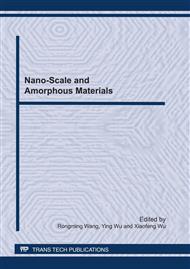p.1
p.6
p.11
p.19
p.23
p.31
p.37
p.41
Carbon Nanofibers Preparation Using Carbon Monoxide from the V-Type Pyrolysis Flame
Abstract:
Synthesis carbon nanofibers from V-type pyrolysis flame use simple carbon monoxide and acetylene /air premixed flame. Catalyst is transported by helium into the burner. The carbon nanofibers from the sampling probe were characterized by scanning electron microscope and transmission electron microscope. The influence of the fuel equivalence ratio and the flow of carbon monoxide were discussed in detail to reveal the formation rule of carbon nanofiber from the pyrolysis flame. The results indicate that carbon monoxide is a good carbon source gas for the preparation of carbon nanofibers. Under appropriate temperature and optimized flow of carbon monoxide, carbon nanofibers with good quality can be prepared from the V-type pyrolysis flame. It can be concluded that this flame method is effective for the preparation of carbon nanofibers.
Info:
Periodical:
Pages:
6-10
Citation:
Online since:
June 2011
Authors:
Keywords:
Price:
Сopyright:
© 2011 Trans Tech Publications Ltd. All Rights Reserved
Share:
Citation:


